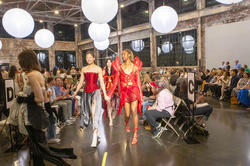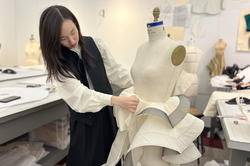The well-crafted looks were unveiled at Providence’s WaterFire Arts Center.
Apparel Designer Henry Hawk to Represent RISD at Supima Design Competition
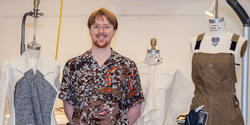
New grad Henry Hawk 24 AP is working on the capsule collection he will present on September 5 at the 2024 Supima Design Competition. Launched in 2008, the annual runway show was created to introduce the next generation of designers to industry leaders at New York Fashion Week. Hawk is competing against alums from Drexel University, the Fashion Institute of Technology, Kent State School of Fashion, Parsons School of Design and School of the Art Institute of Chicago, and the winner will earn a $10,000 cash prize. Here he discusses looks in progress and what it means to participate in this high-profile competition.
How is your collection coming along?
I just got back from a fitting in NYC, where I got to see my designs on models for the first time and meet the other contestants. It was a blast! Each of us is designing five looks for the September 5 runway show, and they all have to be women’s evening wear. I’ve mostly done menswear in the past, so this has been a big learning curve.
I understand that the competition brings in big-name designers to mentor the contestants along the way?
Yes, I’m meeting with a team of critics on Zoom every week, and [fashion designer] Bibhu Mohapatra has been a special guest. They’re helping me narrow down my ideas for the collection and make the best versions of each design. I think it’s harder to do five looks than, like, 40 because you have to really hone in on your message. [RISD faculty member] Maha Barsom 02 AP is my competition mentor. I took my first Apparel Design class with her during Wintersession of freshman year, so it has all come full circle.
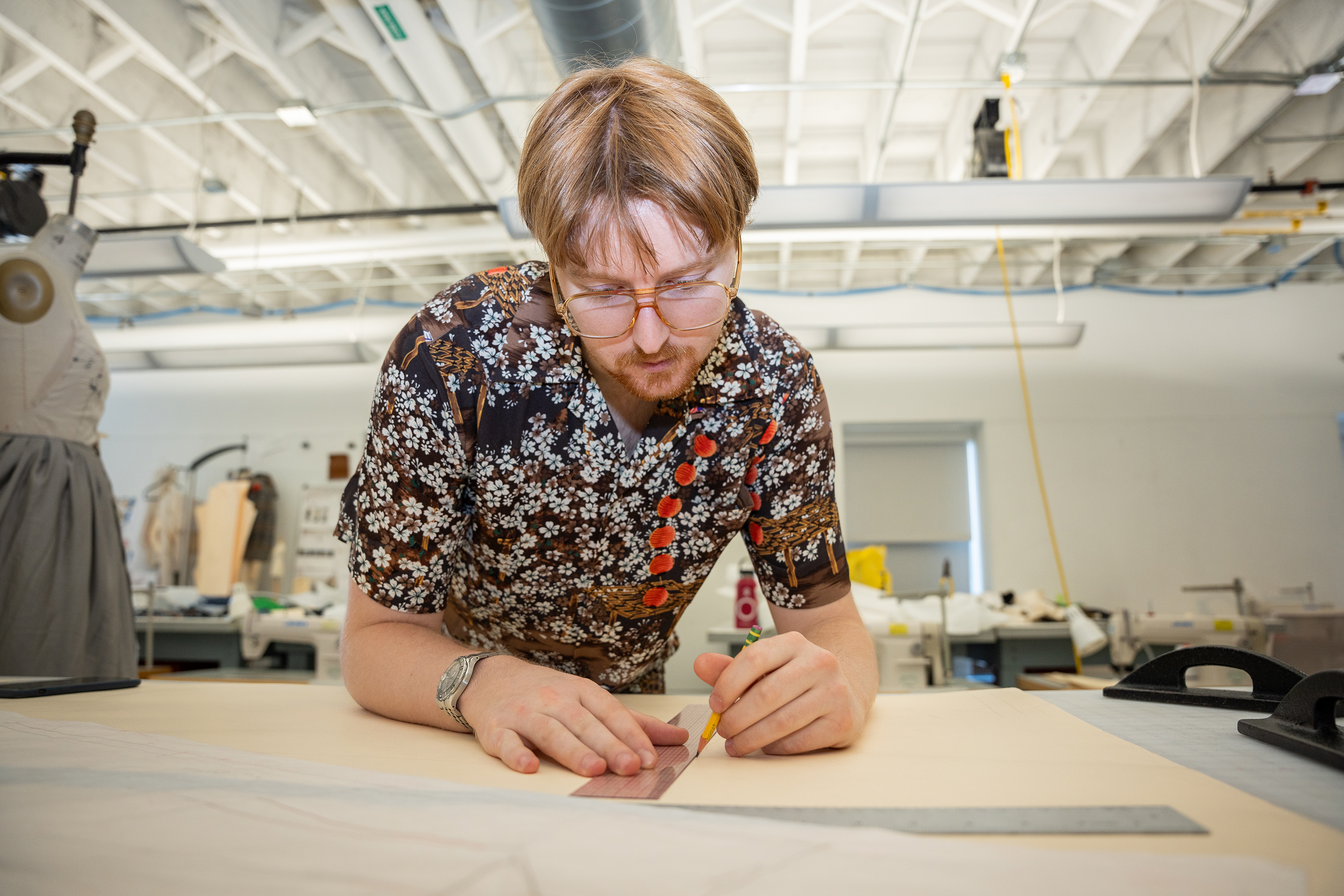
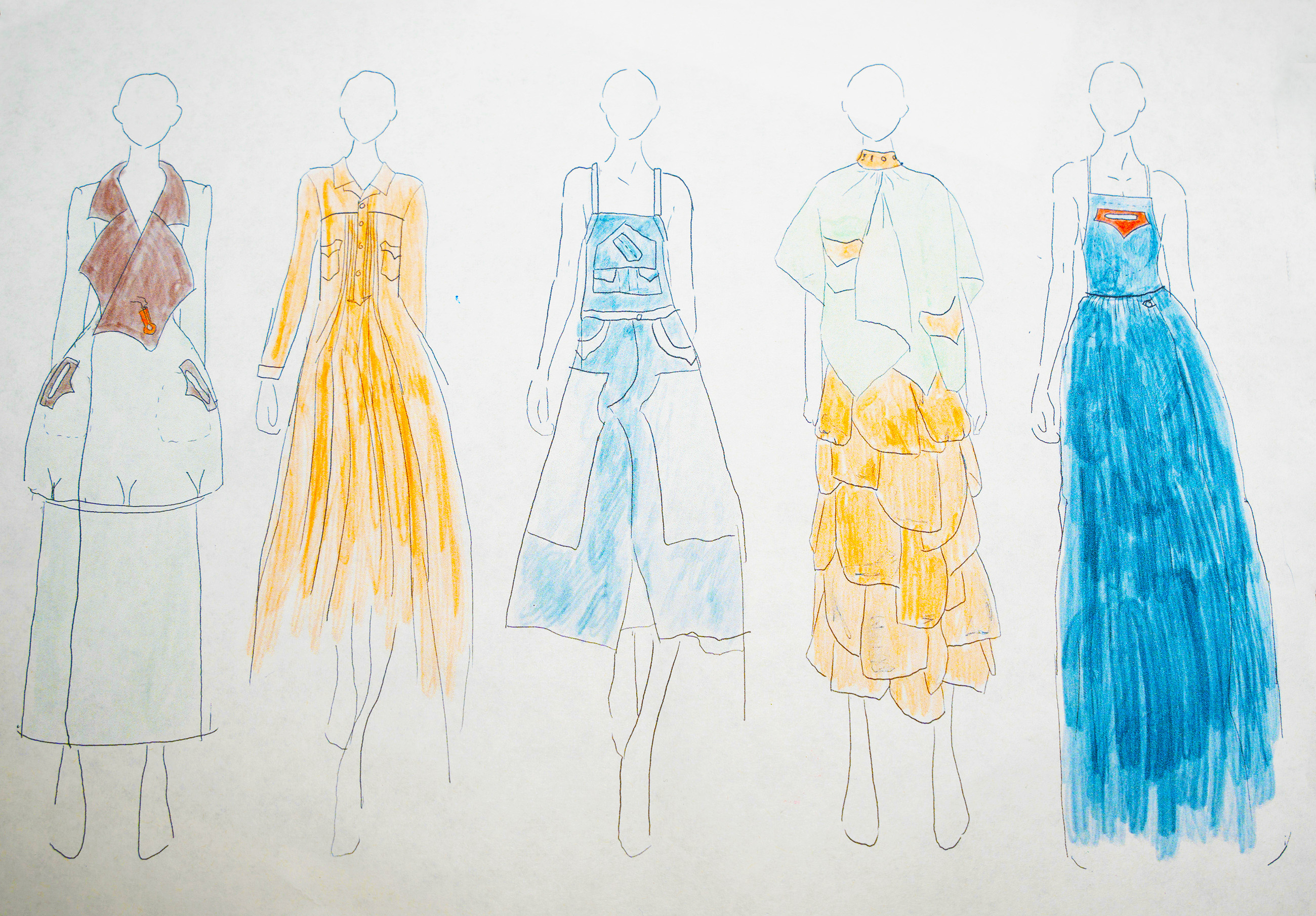
How does this collection relate to the one you showed at the RISD senior show in May?
My thesis collection explored early workwear and was made entirely from repurposed and deadstock fabrics. I’m really a nerd about jeans and could go on all day about their history and the forgotten techniques used to make them, like pockets with decorative panels that make them more durable. I’m highlighting those elements for my Supima designs and trying to push decorative but functional details into evening. That’s really what I’m after.
Is there a theme in terms of color?
I went to Tokyo earlier this summer and collected photos for inspiration. A lot of them were of rusting metal roofs on decaying buildings. They had these beautiful blue-green and orange-brown patinas. So that and the indigo denim I’m using make up the color story.
And each design will feature a different Supima cotton fabric?
Each look has to be 80% of one of the five contest fabrics: denim, twill, shirting, velveteen and jersey. I’m excited that it’s cotton grown here in the US—mostly in California but also in Texas and Arizona. It’s an excellent fabric to work with—very long-lasting and soft. Supima dyed some of the fabric for me, but most of it is at a dye house right now. This skirt with all the pockets is going to be denim. I’m kind of imagining this cool inventor girl who had all these work clothes that she took apart and made into amazing dresses.
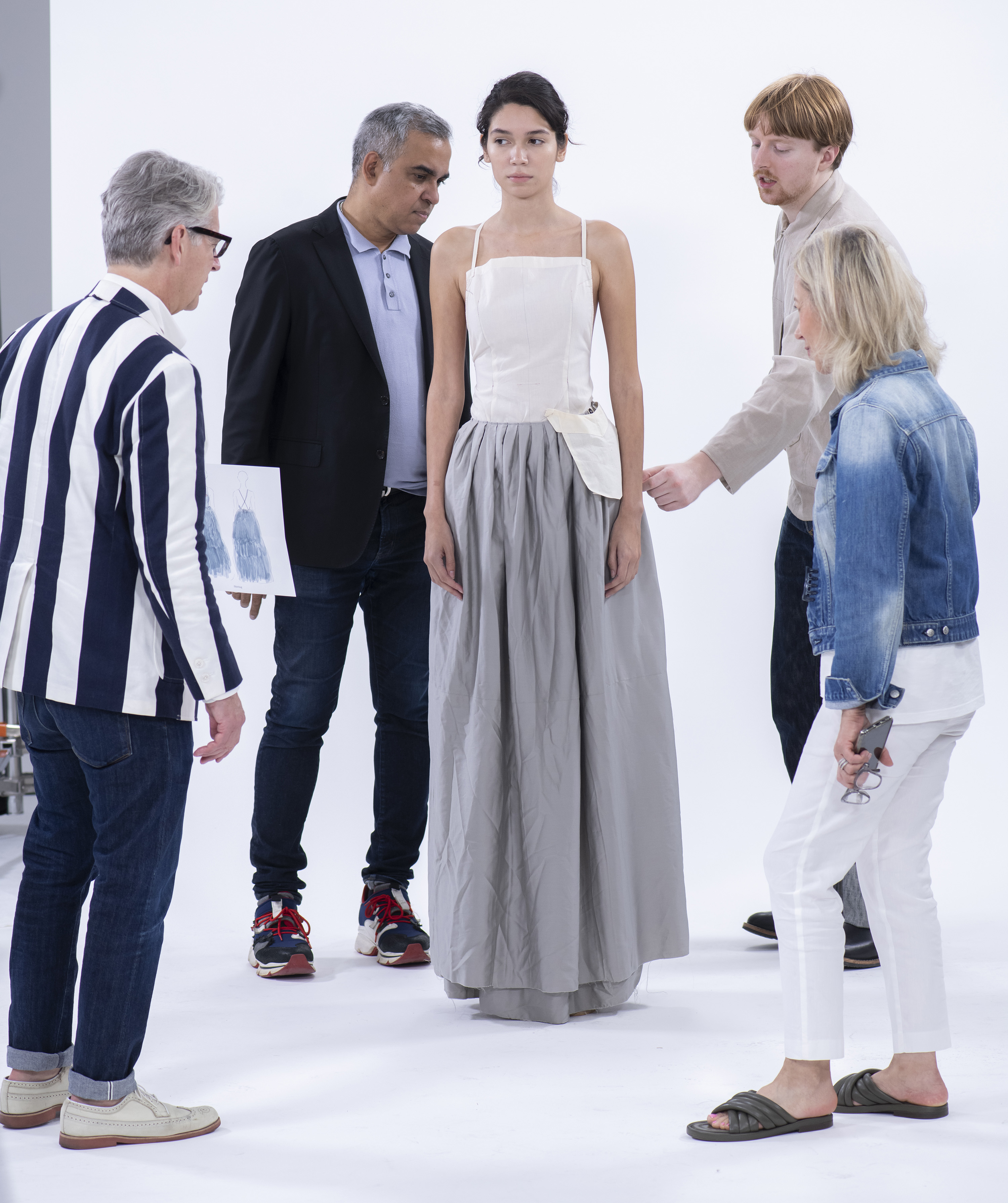
Is that similar to the way that you work?
Taking things apart and remaking them is a really exciting design process for me. And it’s super important right now because we live in an excess of clothing manufacture, and we have to figure out how we’re going to repurpose all this stuff.
When did you first get into apparel design?
I’ve been drawing and doodling since I was five years old. When I got to high school, I started screen-printing my drawings on t-shirts and hoodies and got into designing clothing that way. Simultaneously, I became obsessed with thrifting, which opened me up to fashion and developing my style. I honed my sewing skills at RISD and also learned a lot from [RISD faculty member] Philip Sawyer, a tailor and designer in Boston I worked with during COVID.
How is this experience contributing to your growth as a designer?
The Supima critics have definitely challenged me, and I’m taking time to digest their feedback. I’ve always taken a lot of pride in making things that will last, and I think the competition organizers recognized that when they selected me. I feel really lucky that I get to make another collection fresh out of school, which is almost like free grad school. I also get a lot of fabric and a lot of exposure. And showing at New York Fashion Week is pretty awesome.
Interview by Simone Solondz / studio photos by Kaylee Pugliese
August 5, 2024
